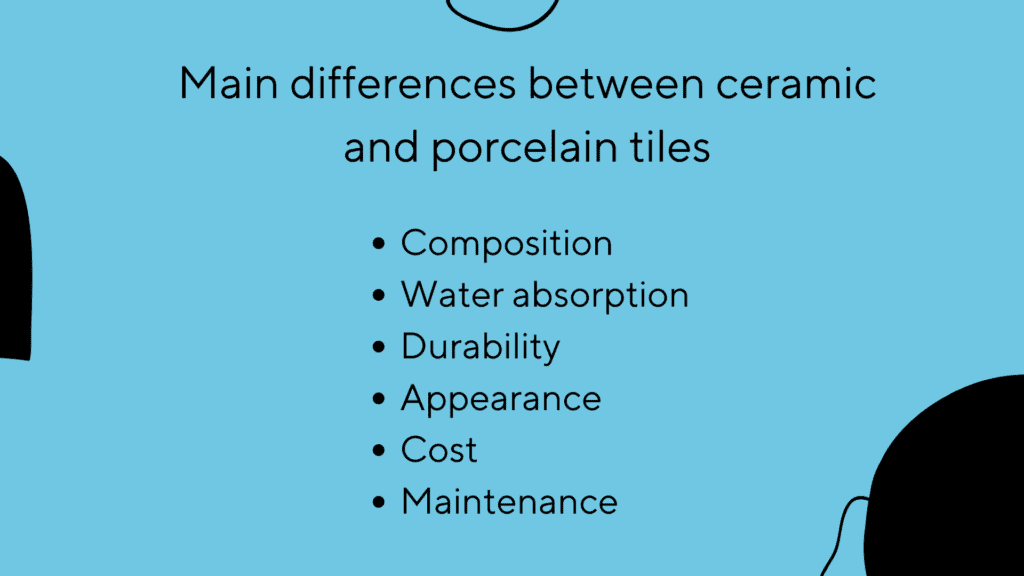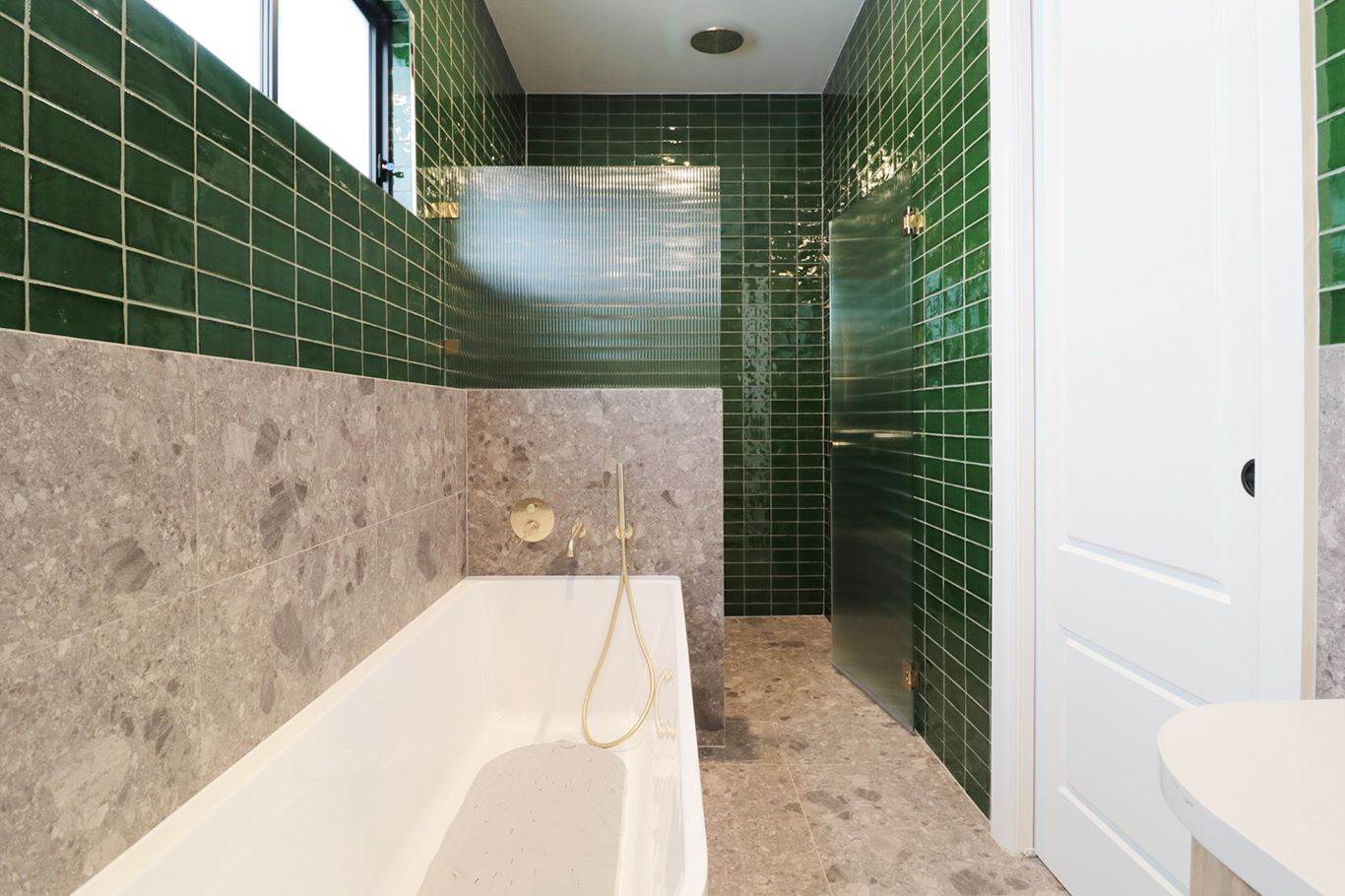Porcelain and ceramic may belong to the same family of tiles, but there are several critical differences between porcelain and ceramic tiles. It’s essential to consider the properties and capabilities of both porcelain and ceramic before choosing which type of tile you’re going to install. That’s where Cheapestiles comes in — this article will identify the key differences in materials and costs and compare the advantages and disadvantages of both tiles.
Understanding Tiles: Ceramic and Porcelain
Tiles are a popular floor and wall covering that is both durable and decorative. They can be made from a wide range of different materials. From marble tiles to terracotta tiles to travertine tiles, each material has its own unique aesthetic and functional appeal.
Porcelain tiles are made of white clay, finely-ground sand, and feldspar — fired together at a high temperature. Meanwhile, ceramic tiles use natural red, brown, or white clay, also fired at a high temperature — and glazed and patterned.
Main Differences Between Ceramic and Porcelain Tiles
Ceramics and porcelain may be made with some of the same materials and processes, but they differ significantly in functionality, durability, water absorption, appearance, cost, and care requirements.

Composition
Porcelain tiles are more rigid and denser than ceramic tiles due to their combination of materials and the higher temperature at which they are fired. This makes porcelain ideal for residential and commercial areas with high foot traffic, while ceramic tiles are best for light to moderate-traffic areas.
Water absorption
Porcelain tiles are less porous than ceramic tiles because the clay is denser and fired at a higher temperature; porcelain tiles absorb less than 0.5% of moisture — significantly less than ceramic tiles’ absorption rate.
Durability
Porcelain tiles are denser and heavier than ceramic tiles and, therefore, stronger, more durable, and highly resistant to wear and tear. However, this also makes them more brittle — and potentially prone to cracking.
Appearance
Ceramic tiles usually have a slightly bumpy or coarse finish, while porcelain tiles have a smooth, fine-grained finish. Ceramic tiles are glazed, whereas porcelain tiles have the same colour throughout.
Cost
Porcelain tiles are generally more expensive than ceramic tiles depending on the tile’s size, design, and quality. You’ll probably also spend more money installing porcelain tiles, as they’re harder to cut and more difficult to lay.
Maintenance
Ceramic and porcelain are both easy to clean and maintain. However, ceramic tiles are more susceptible to staining than porcelain tiles. Meanwhile, the low water absorption rate of porcelain tiles makes them more resistant to staining than ceramic and easier to maintain — making them a lower maintenance material.
Advantages and Disadvantages of Ceramic Tiles
Ceramic tiles boast several vital advantages that make them an excellent choice:
- Ceramic is easier to cut and shape.
- Ceramic tiles are easier to lay and install.
- They are available in a wide range of more intricate designs.
- They’re more affordable.
However, ceramic tiles also come with the following disadvantages:
- They may be prone to cracking in very cold weather.
- They can only be used inside.
Advantages and Disadvantages of Porcelain Tiles
Porcelain tiles hold the following advantages over ceramic tiles:
- Porcelain is durable, strong, and hard-wearing.
- Porcelain tiles are non-porous and mainly impervious to water.
- They can be used for exterior and interior surfaces alike.
However, porcelain isn’t faultless and also comes with these disadvantages:
- The hardness of porcelain means that tiles can be more brittle.
- Porcelain is generally only available in basic designs.
- Porcelain is more expensive than ceramic.
- Porcelain is more challenging to cut, shape, and install because of how hard it is.
Choosing Between Porcelain and Ceramic Tiles
So, what’s the right choice? That depends on what you need them for. When choosing between porcelain and ceramic tiles, consider the following factors:
Location: Some of the most common areas for tiles to be laid are the shower, kitchen, and pool area. All of these are best covered by porcelain tiles due to their non-porous nature. Porcelain tiles are also suitable for harsher outdoor conditions, while ceramic tiles should only be used indoors.
Foot traffic: If you’re looking to lay tiles in an area with high foot traffic, such as a hallway, kitchen, or commercial space, porcelain is the more resistant choice.
Style: If you prefer stylish and intricate designs, ceramic tiles are available in a much greater range of designs and patterns than porcelain.
Budget: If you’re on a tighter budget, go for ceramic tiles. They’re cheaper than porcelain and still offer high-quality flooring and wall options.
Keep in mind that both porcelain and ceramic are excellent choices for tiling; it all depends on your preferences and priorities. If you’d prefer something aesthetic and easy to install, go for ceramic. But if your key concern is functionality, porcelain is the best pick.

Final Thoughts
Carefully consider the advantages and disadvantages of porcelain and ceramic tiles before you make a decision. However, it’s also important to remember that, fundamentally, they’re both excellent choices. No matter what you choose, you’ll enjoy the benefits in your home for years to come.
Still stuck? Not to worry — you can reach out to the tile experts at Cheapestiles. We offer affordable and high-quality porcelain and ceramic tiles in a wide range of designs, finishes, and patterns. We’re always ready to answer any remaining questions you might have about porcelain and ceramic tiles and help you find the best and most affordable tiles for your needs.
Have a enquiry about Tiles?
Fill out the form below and one of our tile expert will get back to you.


